City details / Global
Up close
It’s often the little things that leave a lasting impression when visiting a new city. From flickering neon lights in Portugal to beautifully painted manholes in Japan, Monocle picks out 10 unique and memorable city details.
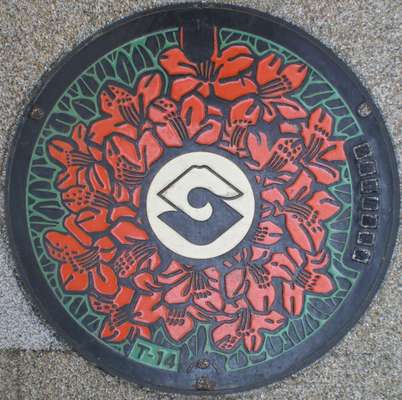
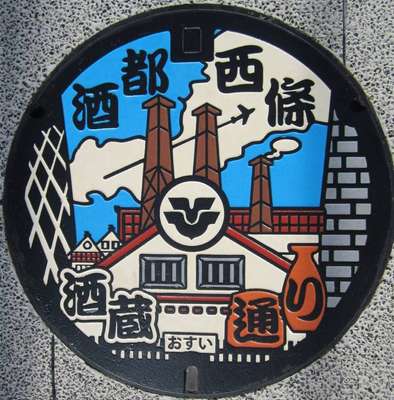
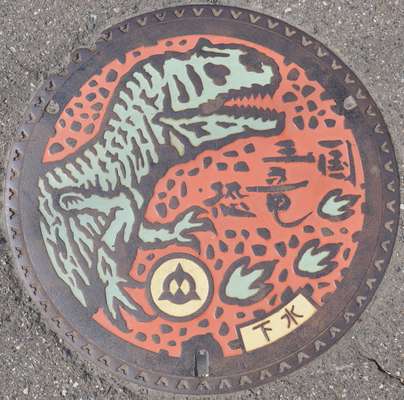
01
Drainspotting in Japan
In an age when most pedestrians’ eyes are locked on their smartphones, who pays attention to manholes in the street anymore? Be sure to do so in Japan, where more than 10 million of them sit quietly, decorated with colourful illustrations of local birds, trees, landscapes, traditional crafts and more. “It started from a single bureaucrat in the early 1980s,” says Noboru Fujiwara at Sewage PR Platform, an expert on the subject.
The unknown bureaucrat identified that many people were ashamed they worked in the industry and hoped to change that by using some nice design, Fujiwara explains. The idea encouraged municipal governments and builders to design their manholes without compromising required safety standards. Since then the phenomenon has spread nationwide, from Okinawa to Hokkaido, and has accumulated a collection of 1,800 patterns.
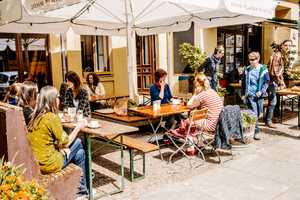
02
Communal seating in Berlin
From mid-morning onwards in Berlin, the clack-bang of biergarnitur tables and benches being unfolded for the day can be heard city-wide. Made from wood and steel, the biertisch (beer table) is the perfect place for a serendipitous meeting – an unshared table is an unthinkable, antisocial decadence. Their design requires a peculiar etiquette: when getting up from sitting on the bierbank (beer bench), you must warn those on the end to avoid seesawing. Set out in lines or stacked up for the night, the streets of Berlin fill with these sentinels of outdoor summer life from March to October.
03
Lighting up Lisbon
Neon signage in the Portuguese capital date back to the early years of the Salazar dictatorship where signmaking – like other industrial crafts – was protected by the fascist regime until the 1970s. Their appeal went beyond aesthetics too, as custom neons provide years of round-the-clock, low-cost service. One neighbourhood where they can still be viewed in their original glory is Cais do Sodré, a site where many returning sailors would let loose in the bars (many named after seafaring port cities and nations such as Tokyo, Oslo and Liverpool) and brothels of its sleazy backstreets. Though many old haunts are now being replaced or upgraded, Lisbon nights are still punctuated by this distinctive fluorescent flicker.
04
Handy doorknockers in Valencia
Vestiges of the Islamic caliphate are dotted all across the Iberian peninsula. In Spain’s southern regions some elements have become so heavily integrated into the urban fabric that even locals would struggle to identify their provenance. In the ancient port city of Valencia, hand-shaped doorknockers can still be spotted in the old quarter: remnants of an era when the Moors ruled the land and believed that placing the hand of Fatima on their front doors could ward off evil spirits. Holy Roman Emperor Charles V decreed a ban on Islamic symbols in 1526 but, centuries later, a walk through Valencia’s El Carmen district hints at the resilience of these historic hand-me-downs.
05
Toronto’s unique bike rings
Rolled out during the mid-1980s, these cast-aluminium bicycle-parking rings are now so ubiquitous in Toronto (there are more than 17,000 of them) that they’ve become the giveaway for residents whenever Toronto plays a stand-in for US metropolises on films and TV. Each ring bears the initials of its creator, local architect David Dennis – then an urban designer for the municipality. Cyclists lock their bikes against the circular shape, which has two contact points for added stability. “By providing secure parking, the rings encourage Torontonians to cycle and reap all its benefits,” says Dennis.
06
Shop signage in Genoa
Genoa’s city centre is dominated by car-free streets where independent retail is still king. Businesses invest in attractive signage with some opting for old-fashioned cursive fonts and others choosing crisper typefaces. Several third-generation firms ply their trade crafting logos on metal, wood and glass, using lettering in gold leaf or embossed in brass. The approach makes shop fronts on the city’s historic palazzos look a lot smarter than the backlit plastic signs in favour elsewhere.
07
Street art in Portugal
Pedestrians look down on pavements expecting to see cigarette butts and rubbish. But in Portugal, pavements on avenues and squares are turned into street art. Typically made from limestone hewn by hand into black-and-white cubes, calçada portuguesa is used to create coats of arms, animals or maritime themes linked to the country’s seafaring past. However, the most famous example is found in a former Portuguese colony: the tessellated walkway along Copacabana beach in Rio de Janeiro, designed by landscape architect Roberto Burle Marx.
08
Guardians of Kyoto
When you’re in Kyoto, be sure to look up at the rooftops of traditional machiya houses where you will see mini guardians known as Shoki-san. Ranging from 10cm to 30cm in height, some of the clay sculptures stare down the street while others beat monsters. Fear not: they are there to ward off evil spirits. It’s believed Shoki-san defeated a beast in a dream of a Chinese Tang Dynasty emperor and headed for Japan. Now some 2,000 charming little mighty men sit in Kyoto.
09
Simple street numbering in Helsinki
In Helsinki you rarely struggle to find the right address. The Finnish capital’s building regulations dictate that each property has to have its street number on display – and illuminated in the dark. Like many other Nordic nations, Finland has a simple solution: a box that lights up from the inside. In Helsinki you’ll find whole districts with almost identical street-light boxes. This may be about to change though as new, different-shaped models have been appearing for sale.
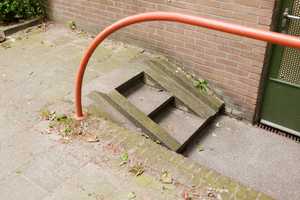
10
Savvy cyclers of Amsterdam
Getting round Amsterdam by bike is easy with this smart urban design solution. Call it what you like: a bicycle gutter, wheel rink or cycle hole. You can find the ramps all over the city: at apartment blocks so residents can push their bikes up the stairs and at bridges for those who’d rather not bounce their precious bikes up the steps. Not to mention the many universities, museums and train stations with one. Simply place the wheels in the gutter and off you go.


